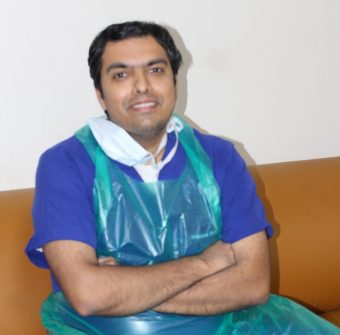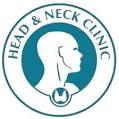Goitre - Thyroid Treatment in Mumbai
Goitre, also called goitre, is a collection of thyroid tissue in the neck. The main symptom of goitre is an enlarged gland that can be felt by touching the upper part of your neck. The most common types of goitres are subacute and chronic. Subacute goitre usually indicates an earlier cancer or tuberculosis, while chronic goitre indicates a more longstanding problem that may be related to iodine deficiency or other diseases.
Symptoms of goitre include a feeling of heat in the chest and neck. It is caused by an overactive thyroid gland. The symptoms may vary from person to person. In adults, it usually has no major effect on memory and thinking abilities. However, if the goitre gets very large and close to the throat, it can lead to breathing troubles and heart rhythm irregularities that can be serious.
The most common symptom of goitre is a hard, swollen and non-tender lump on the neck, known as the thyroid. When enlarged the thyroid may press against surrounding tissue. Other symptoms include hoarseness and a feeling of weakness or tiredness. In some cases it can cause permanent damage to the airways in the neck (pneumothorax), leading to breathing difficulties. The diagnosis is based on your symptoms combined with a blood test which measures levels of thyroid hormones (T3 and T4).
Goitre is an overgrowth of the thyroid gland, which produces hormones that stimulate the growth of body and brain. The gland itself can be swollen, painful and uncomfortable to live with.
Goitre is differentiated by the symptoms and disease, including hydrops, or swollen neck glands that may distort the face, aching and swelling of the hands and feet, loss of appetite and weight.
a goitre is a swelling of the thyroid gland and can lead to many complications. There are three types: functional, functional subclinical and clinically significant goitre’, this latter usually being more serious, with high levels of TSH.
Hyperthyroidism vs Hypothyroidism. Symptoms of hyperthyroidism, gallop and joint pain, insomnia and no appetite. Diagnosis is through blood tests. If you have the symptoms of hyperthyroidism then go to your physician immediately even if you feel normal.
Goitre is an enlargement of the thyroid gland. It can be detected by feeling for a lump under your neck (this might be painful and swollen). The cause of goitre is too much thyroid hormone production.When you get to school or work, you will be checked over for signs of antibodies to your thyroid gland, which may indicate goitre.
Goitre is a disease of the thyroid gland that results from enlargement of the thyroid gland. The most common form of goitre is called toxic or Hashimoto’s goitre, where there is a problem with the functioning of the thyroid gland due to an autoimmune reaction. If you suspect that you have goitre then please visit your GP or GP practice as soon as possible.
Goitre is the overgrowth of a thyroid gland. It’s result is an enlarged, swollen thyroid gland that may be painful and tender to touch. It’s most common in women and children, but men can experience it too. A goitre can also be caused by an autoimmune disease when the immune system damages the thyroid gland.
Goitre or goiter is a disease of the thyroid gland. It could be found in an adult or a child but it is especially common among middle aged women. In most cases, goitre can be diagnosed by examination of a physical examination, blood tests and imaging tests such as x-rays or ultrasound.
Thyroid Cancer Treatment
The most common types are papillary thyroid cancer and follicular thyroid cancer. The most common symptoms of thyroid cancer include fatigue, weakness, irregular periods and weight loss. Diagnosis occurs through blood tests, imaging tests and other diagnostic procedures (such as a biopsy). Once diagnosed with your cancer, there are many treatments to choose from depending on the type of thyroid tumor. Thyroid cancer treatment depends on your unique situation and the type of treatment plan you choose.
Symptoms of thyroid cancer include a lump in the neck, hoarseness, pain in the neck and voice changes, such as trouble speaking. Diagnostic tests should be done to help determine what type of cancer you have and whether it has spread to other parts of your body.
The treatment for thyroid cancers is complex. There are a variety of types of treatment, including surgery, radiation therapy, and other procedures. The availability of these types of treatments depends on the location and type of cancer.
The treatment for thyroid cancer involves various management strategies. Some of those include the surgery, radiation therapy and chemotherapy.
The treatment of thyroid cancer varies with the type and extent of your cancer. Many people with thyroid cancer need surgery to remove or destroy their thyroids. Steroids, radioactive iodine and other therapies may also be used to treat some patients with cancer. In some cases, no treatment is needed at all.
Some of the easiest, most effective treatments for thyroid cancer include surgery, radiation therapy, medications and personal care. Surgery is a common treatment for noncancerous thyroid tissue. The goal of thyroidectomy is to remove as much of the thyroid gland as possible without injuring nearby structures or causing complications. Depending on the size of your tumor, you may also need other procedures such as a lobectomy or anolytesthesia.
Thyroid cancer surgery is a procedure performed on the thyroid. Thyroid cancer is diagnosed by palpating (feeling) the thyroid. Thyroid cancer can also be detected in the blood through blood tests. As part of the screening process, physicians can determine whether a patient has an underactive thyroid (hypothyroidism). If a tumor or another condition causes this hormone deficiency, it must be treated before other treatment for thyroid cancer can begin.
Thyroid cancer surgery includes the removal of thyroid, fine needle aspiration biopsy (FNA), Tch and curative/reconstruction Phase 1.
The thyroid gland, located below the Adam’s apple on the front of the neck, produces hormones that control your metabolism rate. Thyroid cancer occurs when cells in this gland grow out of control and form tumors. It’s usually treated with surgery to remove the entire gland (total thyroidectomy), or by treating specific tumors with radioactive iodine or a different chemical called radioactive iodine ablation therapy.
Role of Throidectomy
Thyroidectomy is one of the most important procedures when treating thyroid cancer. It involves the removal of the source of thyroid hormones, the gland. Thyroid function is restored after surgery because the gland is no longer necessary to produce these hormones. The four main approaches to treating thyroid cancer are surgery, radioactive iodine, targeted therapy, and ablation therapy (heat therapy).
Endoscopic Thyroidectomy
Abstract Endoscopic thyroidectomy is fast becoming a reality with increasing experience in endocrine surgery. Many techniques of minimally invasive video-assisted thy- roidectomy through cervical and extra-cervical routes such as chest wall, transaxillary, trans-oral, post-auricular, trans- luminal approach have been attempted. At present anterior chest wall or trans-axillary routes are favourite extra- cervical routes. In this context, we describe our operative technique of endoscopic thyroidectomy through chest wall to highlight the surgical steps of practical importance.
Various techni- ques such as video-assisted, totally endoscopic, and gasless approaches have been performed. To improve the cosm- esis, extracervical access such as transaxillary (TA), chest wall (CW), and axillo-breast (AB) routes have been successfully employed. As applicable to any laparoscopic procedure, even ET requires adequate surgical experience and knowledge of surgical principles for its optimal performance.
It is feasible to perform ET for solitary thyroid nodule, Graves’ disease, multinodular goiter, low-risk dif- ferentiated thyroid cancer, central compartment neck dissec- tions as demonstrated by many studies
Even novel access routes and methods such as postauricular approach, transoral ap- proach, and robotic ET have been reported.
Irrespective of different approaches for access, the oper- ative steps around the thyroid gland are similar to open thyroidectomy. Thorough knowledge of thyroid surgical anatomy and extensive experience in standard thyroidecto- my are mandatory to achieve optimal results with ET. Choice of laparoscopic instruments for dissection and he- mostasis depends on surgeon’s experience. Although many studies have reported successful ET with various techniques, they are yet to be standardized. Technique of ET varies between individual or departmental or institutional practice. The proposed set of principles is a general overview of an ET technique for information, irrespective of approach and not a guideline for performing ET.
Robotic Thyroidectomy
Minimally invasive techniques, developed with an aim to reduce postoperative pain, improve on cosmetic outcomes, and potentially reduce the length of hospitalization, were introduced at the beginning of the century to treat small thyroid nodules. Technical innovation, improvements in operating techniques and minimally invasive instru- ments, and an advanced understanding of the endoscopic anatomy of the neck, helped thyroid procedures move from conventional to transcervical endoscopic-assisted thyroid- ectomy, transaxillary ,bilateral axillo-breast and retroauricular approaches.
The research behind these transitions was fuelled by the aim to limit or avoid a neck scar: while many patients may well tolerate a cervical scar, potential complications of a scar such as paraesthesia/dysesthesias, local pain, hyper- trophy of the scar and keloid formation have all been de- scribed as adverse outcomes of an open thyroidectomy. The target of current endoscopic procedures is reposi- tioning the scar to a less visible location.
The transaxillary approach features incisions that are concealed in the axilla when an arm is at rest. Before the introduction of surgical robots, the implementation of endoscopic thyroidectomy from a remote access was asso- ciated with a number of technical difficulties.
Limitations such as lengthy learning curve, availability of endoscopic instruments with limited degrees of free- dom, difficult manipulation of delicate structures in a constrained space, flat, bidimensional images or troubles in maintaining a working space. Complications as increased CO2 partial pressure, tachycardia and subcuta- neous emphysema were also reported in cases of carbon dioxide insufflation. Extra-cervical techniques also typically demand more flap dissection, tissue interruption, and longer operating times.
The advantages of Robotic Thyroidectomy
Many surgeons embraced robotic surgery to overcome the limitations of endoscopic thyroidectomy. Robotic systems provide a 3-dimensional magnified view of the surgical field, fine motion scaling, filtration of hand tremor, and accurate and multiarticulated hand-like motions. The technique for robotic-assisted gasless tran- saxillary thyroidectomy (RATS) pioneered by a South Korean group was devised to be scarless neck surgery,and offered less pain and a faster recovery gaining popu- larity rapidly.
The Da Vinci Surgical System (DVSS) model S and Si (Intuitive Surgical, Sunnyvale, CA, USA) have already been integrated into the field of head and neck surgery to facili- tate the performance of thyroidectomy using the minimally invasive extra-cervical approaches.
The fourth generation DVSS Xi (Intuitive Surgical, Sunnyvale, CA, USA), was introduced as an advanced platform offering technical advantages over the earlier version. These include overhead docking, allowing for surgery in a wider field without repositioning the equip- ment, smaller robotic arms, improved range of motion, and ability to dock the camera in any arm, a concept designed to support dissection in smaller spaces without arm interference and better clarity of view.
Standards of Treatment
Well Communication
Infection Prevention
10+ Years Experience
Why Choose Us
- Experienced Specialist Doctors
- Excellent Nursing Care
- Excellent Patient Care
- Friendly Ambience
- Equal treatment


